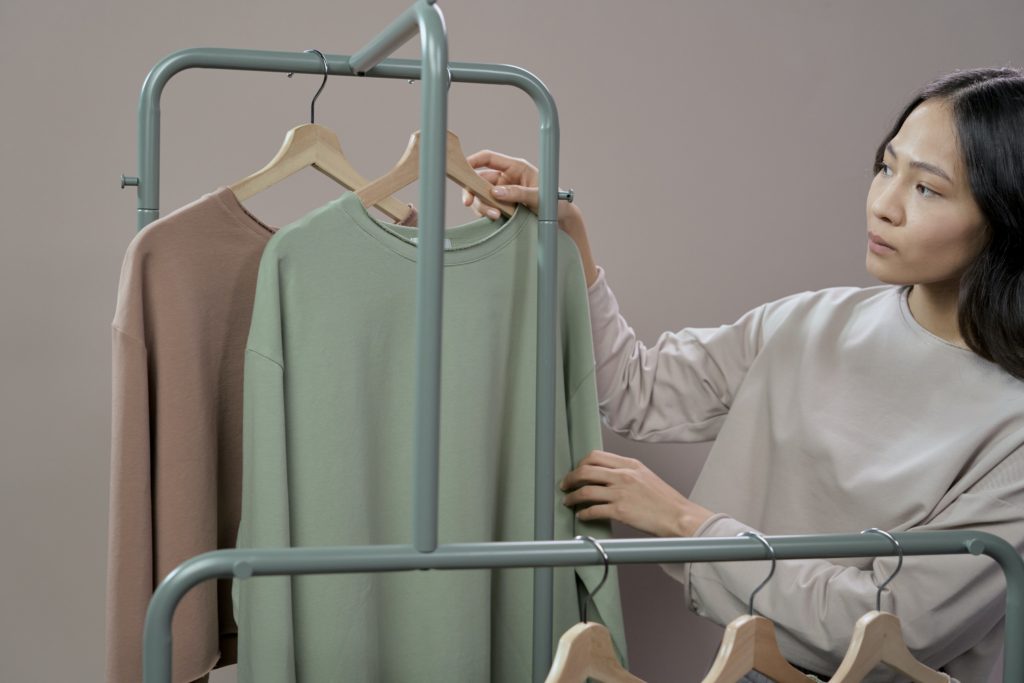With new brands popping up every day, easy access to different options and nearly instant gratification with door to door service, online shopping has become more prevalent than ever. Leaving us, as consumers, with unlimited options for our wardrobe needs.
Social media has created an unprecedented change in the fashion industry. We’ve all seen a trend on our favorite influencer or celebrity, clicked the tag button to see who makes it, then purchased it on the spot to add to our collection. With influencers getting huge views by doing weekly “clothing hauls”, we’ve found ourselves caught in a cycle of micro-trends, that fall out of style as soon as they arrive.
We’re here to break down some quick fast fashion facts and its effects on what’s to come, so that you can go through life looking good and staying informed.

What Is Fast Fashion, Anyway?
Fast fashion is a buzzy word, these days, that can be tricky to define. People often point to online mega brands as classic fast fashion examples. Wildly, most brand names that you know and purchase from are also contributors to the world of fast fashion.
At its most simple level, fast fashion is a system of replicating ever-changing fashion trends at an accelerated speed, producing large quantities of clothing, and repeating the process over and over again at a very rapid rate. This method of production can often cause an exploitation of the workers making the clothes, abusive working conditions, and unfair wages.
From an environmental standpoint, fast fashion has also quickly made a negative impact on the planet. In order to meet consumer demands for affordable, trendy clothing, many companies use cheap materials such as polyester and toxic chemicals during the process. These chemicals and micro-plastics seep into our water supply and have harmful health effects on the earth, our bodies, and most importantly our children.
Additionally, the process of fast fashion deeply affects our landfills and waste production. Since the industry is focused on creating trendy, inexpensively made garments, most clothing items have very short lifespans. In the US alone, over 11 million pounds of clothing waste is produced, per year. While most of these styles are made of plastic-based polyester, these discarded items will not biodegrade, but will instead sit in landfills for hundreds of years.
How Do I Know If Something I’m Buying Is Fast Fashion?
Spotting fast fashion brands in the wild can be a bit tricky. There are very few regulations in the industry, so it can be easy for big-name brands to make false promises about sustainability. When it comes to determining the sustainability of your clothes, check out the following:
- How many collections do they produce a year? – When the fashion industry was new, it was not uncommon for brands to release new designs 2 to 4 times a year. That has changed drastically, with many brands releasing new designs every 4-6 weeks. Check out your favorite stores or sites. If their inventory is changing rapidly, it may not be the most sustainable process.
- How Much Does It Cost? – One of the biggest draws towards making fast fashion purchases is how affordable it is to the consumer. Think of it like this, corners are being cut somewhere to make sure the garment is affordable. Perhaps via materials used, paying workers or even shipping methods.
- How Many Options Do They Have? – Many times if retailers are able to offer large quantities of the same styles and endless color way options, they have an extensive inventory and are over producing clothing. That in turn can result in many items sent to factory outlet stores that will eventually end up in landfills.
But Fast Fashion is So Much Easier!
Listen, we get that building a sustainable wardrobe is not an easy task. From affordability, knowing where to shop and easy access, there are many factors to consider. Not to mention, it can still be difficult to find eco-conscious brands that have all-inclusive sizing.

What Can I Do?
The good news is that small changes toward our relationship with fashion and purchasing clothing is totally doable. Here are a few of our favorite simple tips to get you started:
- Consider Buying Secondhand – Maybe you are the “Queen of Thrift Shopping” or maybe you can think of nothing worse than endlessly browsing the aisles of your local Goodwill? Regardless of either, there has never been an easier time to buy secondhand. If you aren’t a fan of in-person shopping, online options like Poshmark, ThredUp, and DePop are great ways to search for your favorite brands. Still can’t commit to a wardrobe of secondhand clothes? Try apps such as Rent the Runway for more up to date styles that you can switch out as often as you’d like, while still giving a thumbs up to the planet.
- Shop Small – While more and more brands are focusing on producing high-quality, slow fashion, there are plenty of small shop owners who are doing so as well! A quick Etsy search will pull up all sorts of independent designers, who often will make you pieces built to your custom measurements. That way you can keep it for longer periods of time!
- Choose Timeless, Not Trendy – When choosing new pieces for your wardrobe, ask yourself if this is something you could see yourself wearing a year from now. Two years? How about five years? Regardless of where you buy a piece (fast fashion or not), if you wear it for years, it can have a positive effect on the environment.
- Repair, Don’t Toss – When you see an imperfection arise, definitely try to mend it rather than tossing it. Pop into your dry cleaners, who often have tailors available or type in simple sewing tutorials across the internet that will have you repairing that piece in no time!
